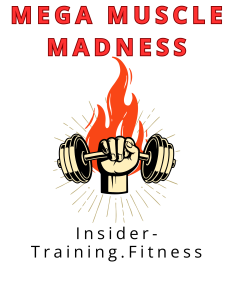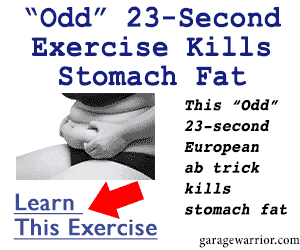The rotator cuff, a network of four muscles (supraspinatus, infraspinatus, teres minor, and subscapularis), is vital for shoulder stability and mobility. Neglecting these muscles can lead to injuries, especially in athletes or those with repetitive overhead movements. This article dives into five evidence-based exercises to fortify your rotator cuff, enhance shoulder resilience, and prevent pain. Backed by expert insights and modifications for all fitness levels, these exercises are your blueprint to bulletproof shoulders.
—
1. External Rotation with Resistance Band
Targets: Infraspinatus and teres minor (external rotators).
How to Do It:
– Anchor a resistance band at elbow height. Stand sideways, grip the band with your outer hand, elbow bent to 90°, and tucked against your side.
– Rotate your forearm outward, keeping your elbow stationary. Pause, then slowly return.
– Perform 3 sets of 12–15 reps per side.
Benefits:
– Counters internal rotation dominance from sitting or lifting.
– Improves shoulder stability during throwing or pressing motions.
Modifications:
– Use lighter resistance; reduce range of motion if pain occurs.
– Perform seated to minimize compensatory movements.
Expert Insight:
A study in the *Journal of Orthopaedic & Sports Physical Therapy* found external rotations reduce impingement risk by balancing muscle strength (Reinold et al., 2007). Physical therapist Dr. Kelly Starrett emphasizes their role in “maintaining shoulder joint centration during overhead lifts.”
—
2. Internal Rotation with Resistance Band
Targets: Subscapularis (primary internal rotator).
How to Do It:
– Anchor the band at elbow height. Face the anchor point, grip the band with your inner hand, elbow bent and tucked.
– Pull the band across your torso, rotating inward. Control the return.
– Aim for 3 sets of 12–15 reps per side.
Benefits:
– Enhances rotational power for sports like tennis or swimming.
– Stabilizes the shoulder during pushing movements (e.g., bench presses).
Modifications:
– Use a towel under the arm to limit excessive movement.
– Perform at mid-range (45° abduction) if overhead positions irritate the shoulder.
Expert Insight:
According to a 2019 *Sports Health* review, balanced internal/external rotation strength is critical for preventing rotator cuff tears in overhead athletes.
—
3. Full-Can Scaption Raise
Targets:*Supraspinatus (abduction).
How to Do It:
– Stand holding light dumbbells (1–5 lbs), thumbs up. Raise arms at a 30° angle from your body (scapular plane) to shoulder height.
– Lower slowly. Complete 3 sets of 10–12 reps.
Benefits:
– Engages supraspinatus without impingement risk.
– Promotes scapular upward rotation, improving overhead mobility.
Modifications:
– Reduce weight; stop at 90° if higher elevation causes pain.
– Perform prone on an incline bench to minimize trap involvement.
Expert Insight:
EMG research by Reinold et al. (2007) shows the “full-can” (thumbs up) activates the supraspinatus as effectively as the “empty-can” (thumbs down) while reducing subacromial stress.
—
4. Side-Lying External Rotation
Targets: Infraspinatus and teres minor.
How to Do It:
– Lie on your side, head supported. Hold a light dumbbell, elbow bent to 90° against your side.
– Rotate your forearm upward, pause, then lower.
– Perform 3 sets of 10–15 reps per side.
Benefits:
– Isolates posterior rotator cuff muscles.
– Improves control during deceleration (e.g., baseball pitching).
Modifications:
– Use a soup can or no weight for beginners.
– Place a towel between elbow and torso to maintain form.
Expert Insight:
A 2020 study in the *International Journal of Sports Physical Therapy* noted this exercise’s efficacy in rehabilitating post-surgical rotator cuff patients due to its targeted activation.
—
5. Cable or Band Face Pulls
Targets: External rotators, rear deltoids, and scapular retractors.
How to Do It:
– Attach a rope to a cable machine or band at eye level. Grip the rope, step back, and pull toward your forehead while flaring elbows outward and rotating thumbs back.
– Squeeze shoulder blades at end range. Perform 3 sets of 12–15 reps.
Benefits:
– Combines scapular retraction with external rotation for compound stability.
– Counters rounded shoulders from desk work.
Modifications:
– Reduce weight; focus on slow eccentrics.
– Use a staggered stance for balance.
Expert Insight:
Strength coach Bret Contreras hails face pulls as “the best anti-postural disaster exercise,” citing their role in improving shoulder longevity for lifters (Contreras, 2016).
Incorporating these five exercises 2–3 times weekly can dramatically enhance shoulder strength and resilience. Prioritize form over load, and consult a physical therapist if pain persists. As noted in *British Journal of Sports Medicine*, rotator cuff strengthening reduces injury risk by up to 50% in athletes (Andersen et al., 2004). Whether you’re rehabbing an injury or fortifying your foundation, these moves are your key to pain-free, powerful shoulders.
**References**
– Reinold, M. et al. (2007). Electromyographic Analysis of the Supraspinatus and Deltoid Muscles. *JOSPT*.
– Contreras, B. (2016). *The Glute Lab*. Victory Belt Publishing.
– Andersen, J. et al. (2004). Effectiveness of Exercise Interventions. *BJSM*.

Train smart, stay strong, and let your shoulders thank you! 💪

